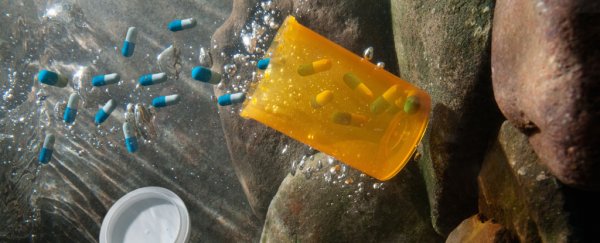Pharmaceuticals, the chemicals found in medicines and drugs, are widely used across the world and allow us to treat and prevent disease.
There is a growing concern that some of these pharmaceuticals are leaching into natural waterways like rivers, streams, and lakes.
To find out if this poses a problem, we asked 4 experts in toxicology and environmental sciences "Are current pharmaceuticals levels in natural waterways dangerous?" Here is what we found out.
What is the current level of pharmaceuticals in our natural waterways?
A USA study found measurable amounts of pharmaceuticals in 80 percent of the water samples they collected from streams across 30 different states. The issue of drugs in natural waterways is not just in the USA but across the globe. A 2014 review of over 1000 studies found pharmaceuticals residues in 71 countries worldwide.
The 2014 review found over 600 different pharmaceutical chemicals in lakes, rivers, and groundwater globally. These chemicals included antibiotics, painkillers, beta-blockers, contraceptive hormones, and antidepressants, amongst others.
How do pharmaceuticals get into natural waterways?
There are a variety of ways that medicines and drugs end up in streams, rivers, and lakes.
One of these ways is through sewage. When we take medications, we only absorb a fraction of the chemicals into our bodies, the rest is excreted out. Improperly disposing of medications by flushing them down the toilet also adds to this.
Pharmaceuticals can also leach into natural waterways from agriculture, where drugs, particularly antibiotics and hormones, are used for rearing livestock.
Finally, pharmaceutical chemicals can also be released from industrial plants that make medications. For example, a wastewater treatment plant that is close to many pharmaceutical factories in India was found to have very high levels of some antibiotics.
Although wastewater is cleaned in sewage treatment plants, Dr Bruno Nunes, an expert in toxicology from Aveiro University, says, "Water treatment processes are not effective to prevent [pharmaceutical] release into the aquatic ecosystem."
What effect does this have on aquatic life?
It is difficult to know the full extent of how these pharmaceuticals affect aquatic life due to lack of data.
However, there are some examples where drug contaminants have had toxic effects on wildlife. For example, the anti-inflammatory medication diclofenac has been found in natural waterways and can damage renal and gastrointestinal tissues in fish, which can kill them.
It is not always possible to predict the effect of pharmaceuticals in the environment based on experiments from the laboratory.
Dr Nunes explains that this is because "some of these drugs may interact with other substances and show some potential to compromise physiological traits of many aquatic species, even in the levels in which these substances occur".
Pharmaceuticals also act in more indirect ways to damage aquatic life. Dr Mike Grace, an expert in environmental science from Monash University, says that current pharmaceutical levels are dangerous as they act "as a mechanism for inducing sub-lethal effects in stream organisms and essential ecosystem services like photosynthesis and nutrient cycling".
Dr Grace explains that "pharmaceuticals at concentrations found in most waterways around the world are termed 'Ecosystem Disruptors'". Estrogen pharmaceuticals have been shown to be ecosystem disrupters by feminizing male fish of certain species. This disrupts the male to female ratio of the fish and causes collapse of populations.
Is there any risk to humans?
Dr Grace says that current pharmaceutical levels in natural waterways are not dangerous to "humans touching the water" or "drinking a few mouthfuls". Currently, the level of pharmaceuticals in drinking water is far below the concentration required for any physiological effect.
The takeaway
Current pharmaceutical levels in natural waterways are dangerous for aquatic life but pose no current threat to humans.
Article based on 4 expert answers to this question: Are current pharmaceuticals levels in natural waterways dangerous?
This expert response was published in partnership with independent fact-checking platform Metafact.io. Subscribe to their weekly newsletter here.
